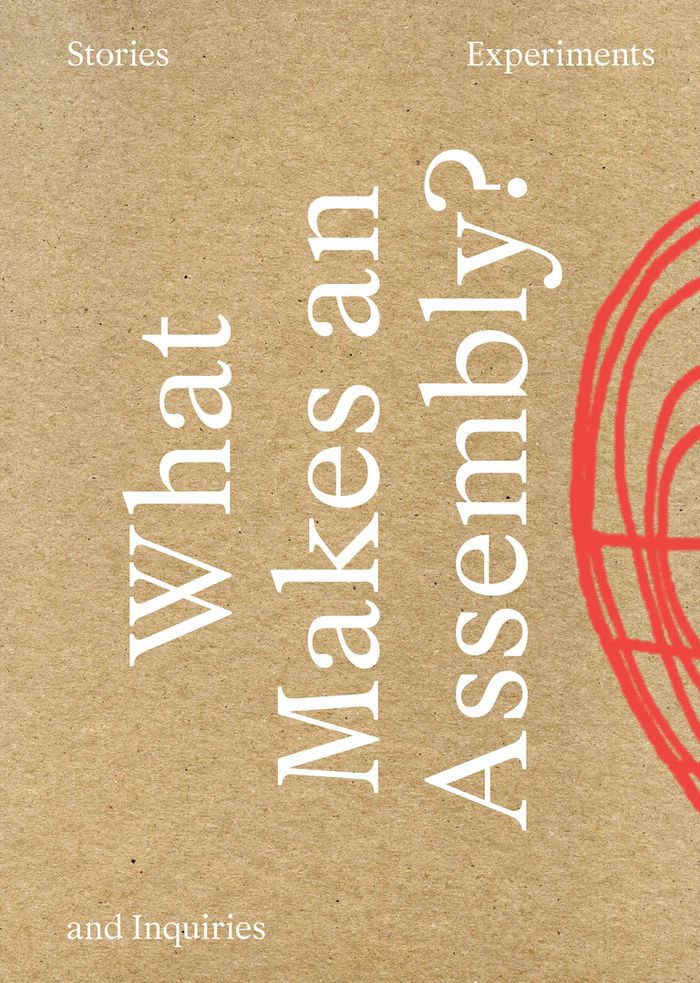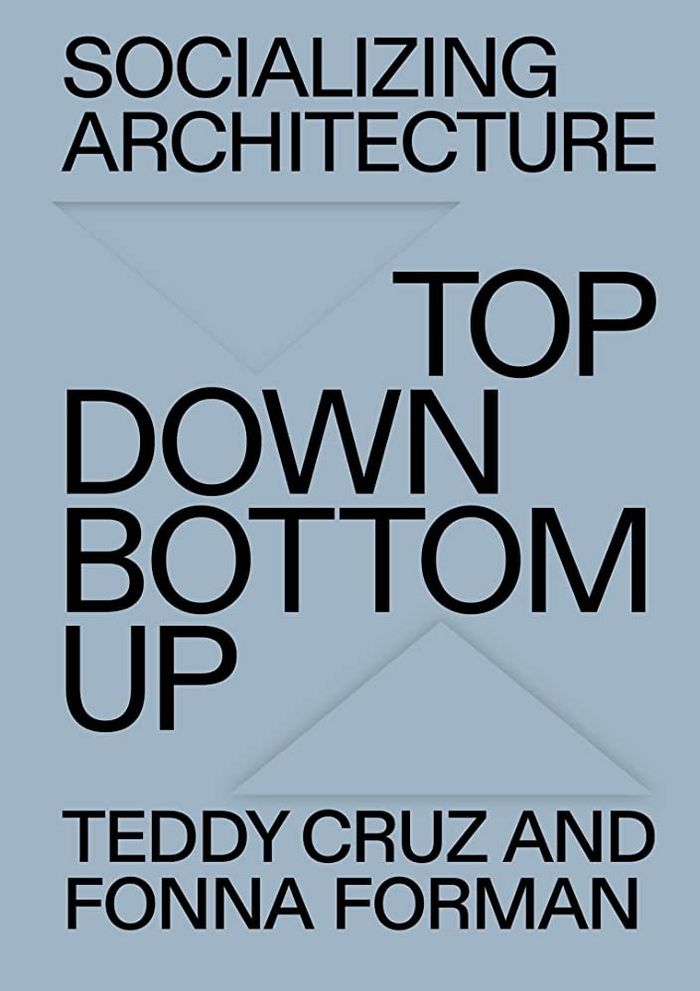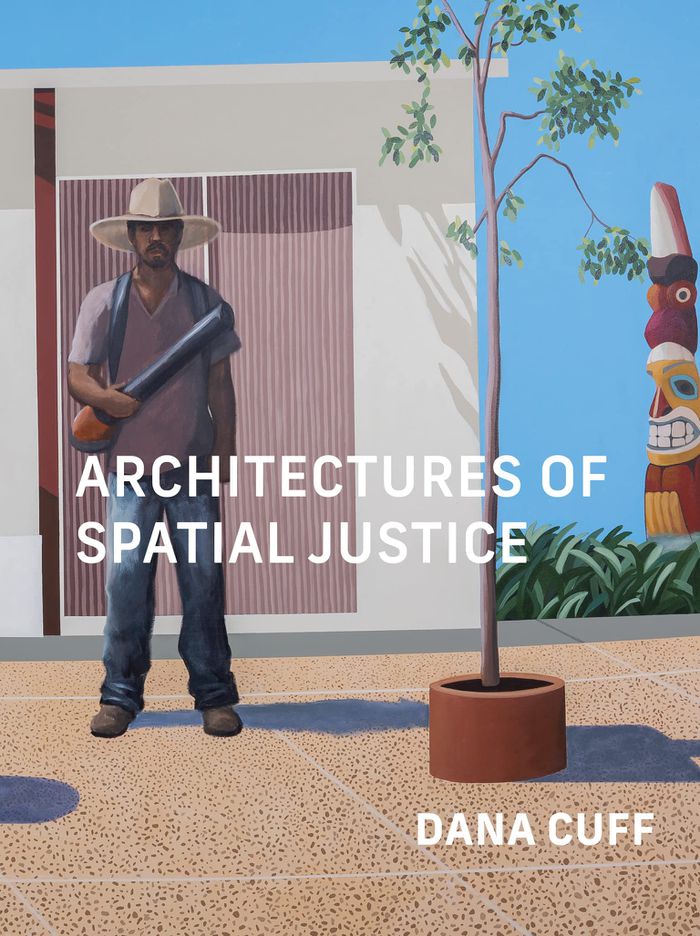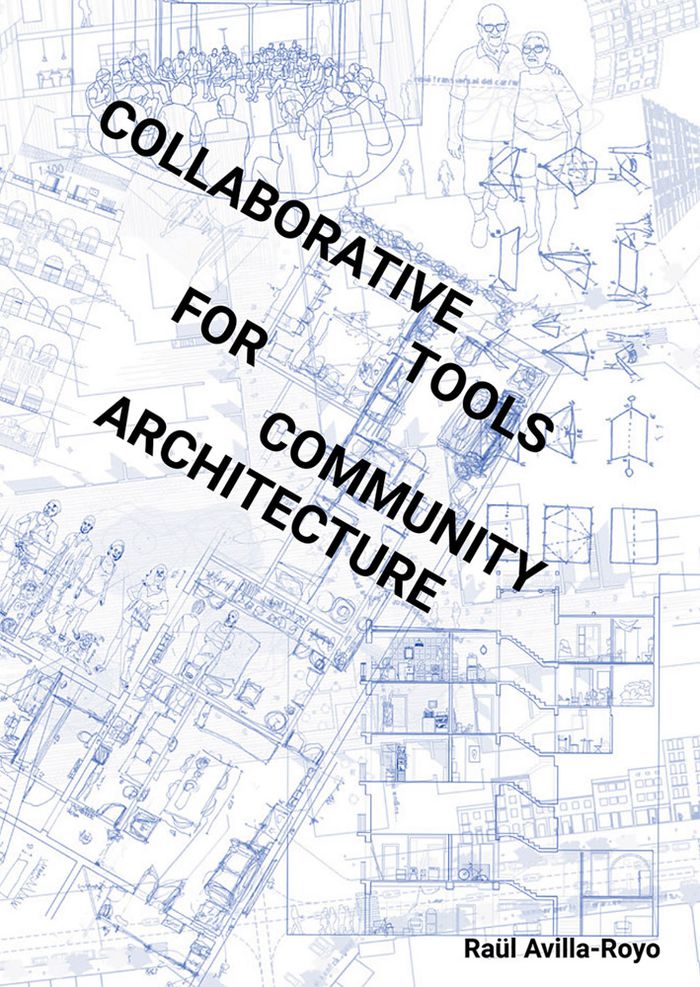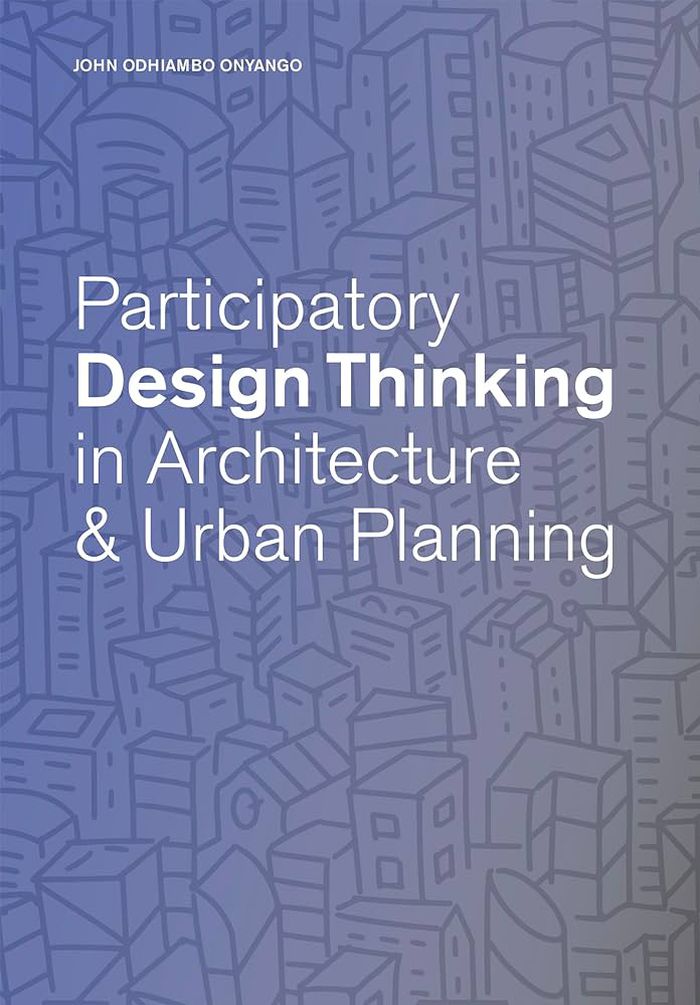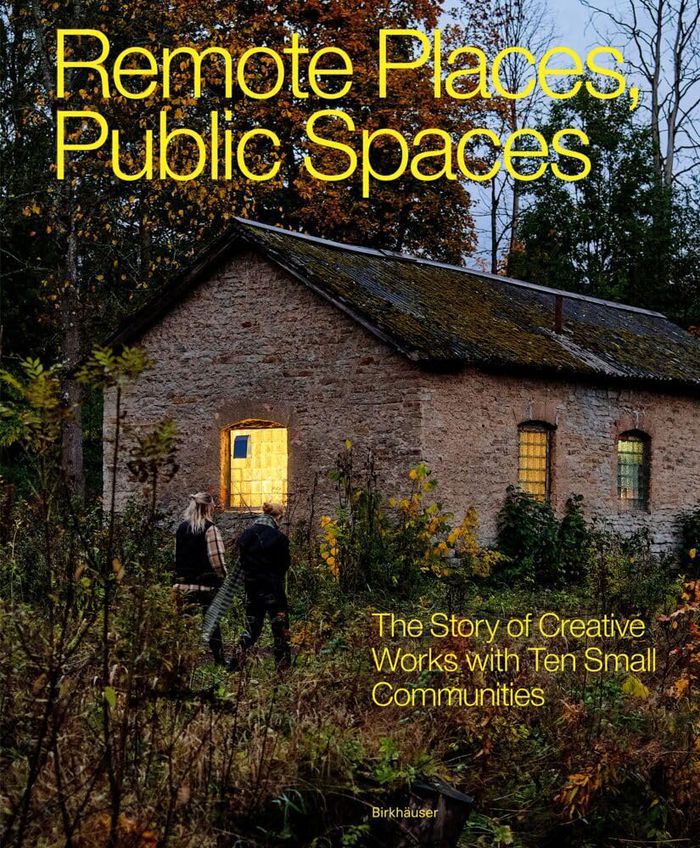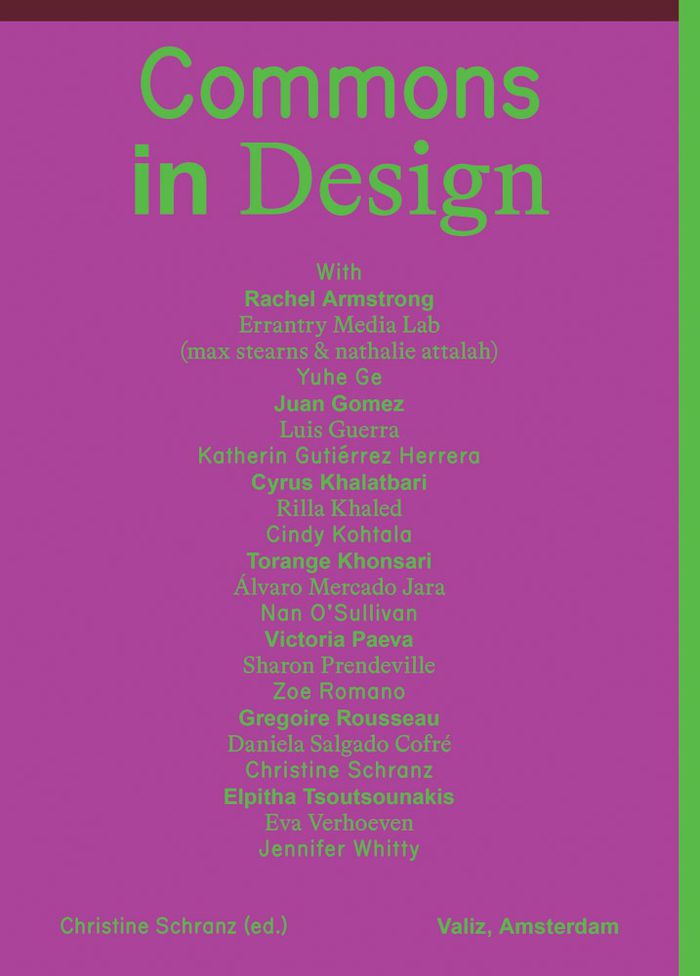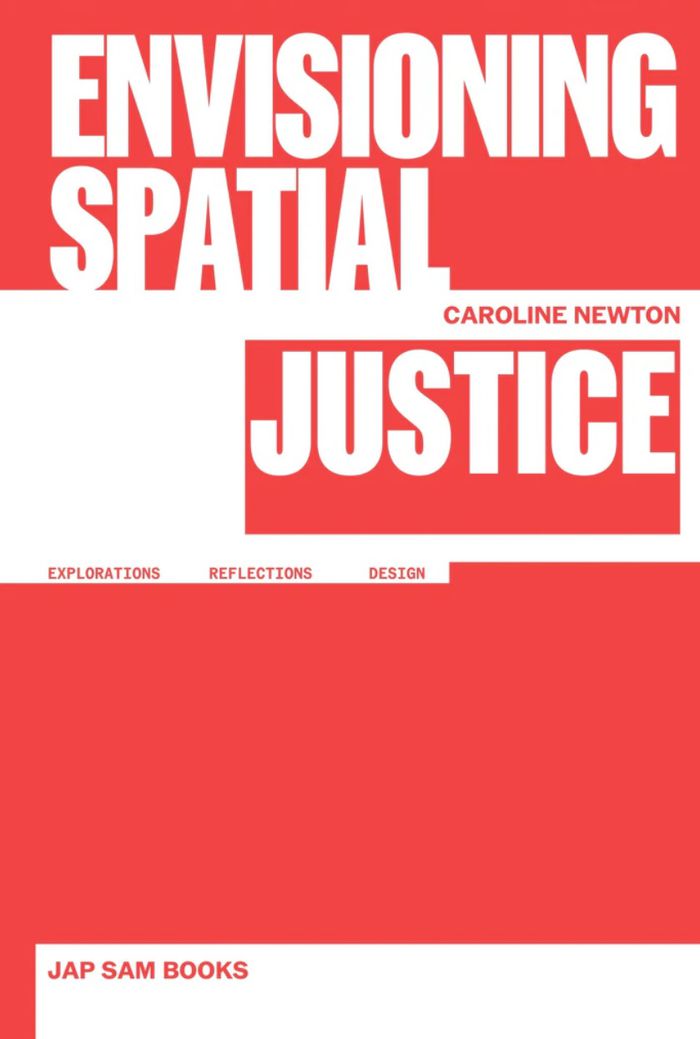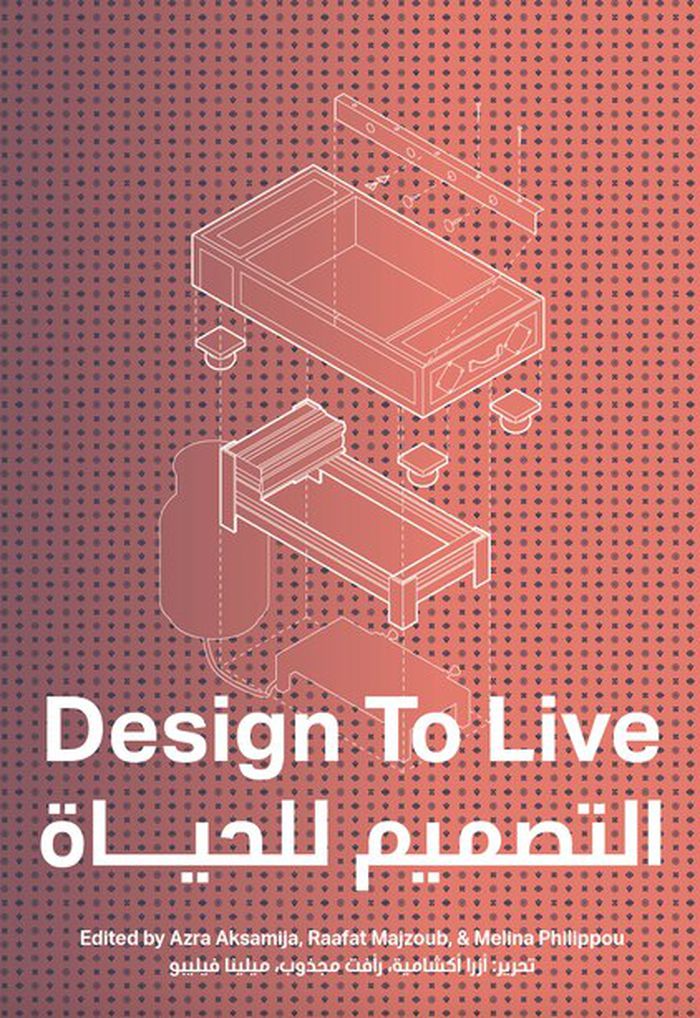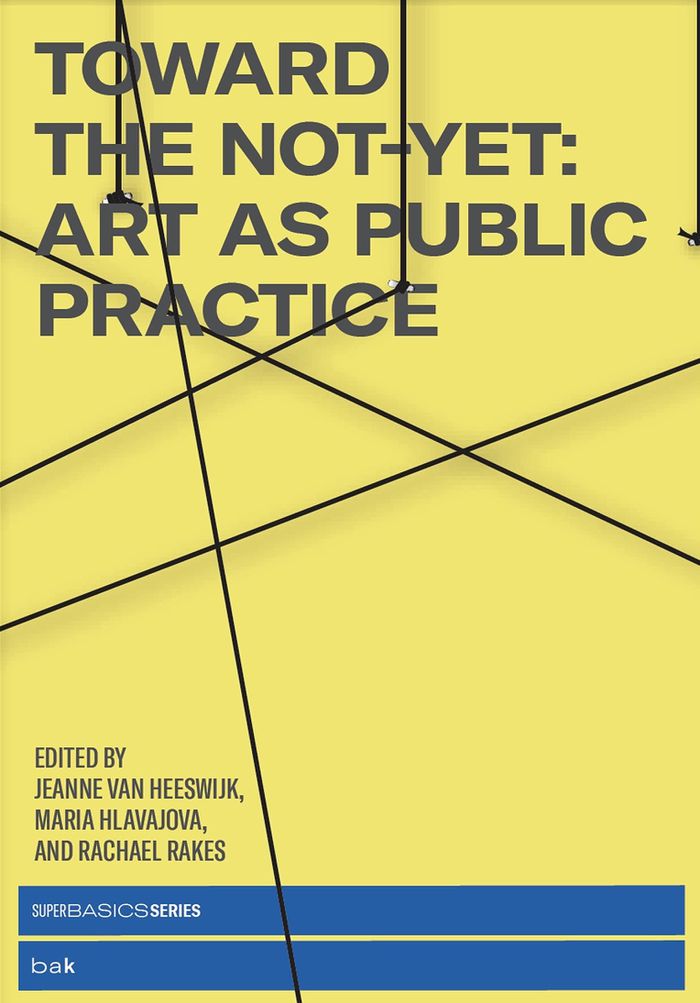$48.00
(disponible sur commande)
Résumé:
Bringing together accounts written by those who practice assemblies, and contributions from artists, activists, historians, philosophers, and social scientists, as well as three architectural experiments that attempt to imagine models for a future assembly, the book proposes a critical inquiry into the potential of assemblies to shape political subjects. What Makes An(...)
février 2023
What makes an assembly: stories, experiments and inquiries
Actions:
Prix:
$48.00
(disponible sur commande)
Résumé:
Bringing together accounts written by those who practice assemblies, and contributions from artists, activists, historians, philosophers, and social scientists, as well as three architectural experiments that attempt to imagine models for a future assembly, the book proposes a critical inquiry into the potential of assemblies to shape political subjects. What Makes An Assembly? examines the tensions that exist in all assemblies between the need for form and the danger of formalization; between the scripts, rituals, and architectural settings from which they derive, and their capacity to erupt and emerge anew.
$71.95
(disponible sur commande)
Résumé:
Situated at the intersection of architecture, art, public culture, and political theory, ''Socializing architecture'' urges architects and urbanists to intervene in the contested space between public and private interests, to design political and civic processes that mediate top-down and bottom-up urban resources, and to mobilize a new public imagination toward a more(...)
mars 2023
Socializing architecture: Top-down/bottom-up
Actions:
Prix:
$71.95
(disponible sur commande)
Résumé:
Situated at the intersection of architecture, art, public culture, and political theory, ''Socializing architecture'' urges architects and urbanists to intervene in the contested space between public and private interests, to design political and civic processes that mediate top-down and bottom-up urban resources, and to mobilize a new public imagination toward a more just and equitable urbanization. Drawn from decades of lived experience, Teddy Cruz and Fonna Forman engage the San Diego–Tijuana border region as a global laboratory to address the central challenges of urbanization today: deepening social and economic inequality, dramatic migratory shifts, explosive urban informality, climate disruption, the thickening of border walls, and the decline of public thinking. ''Socializing architecture'' follows ''Spatializing justice'' (Cruz and Forman, 2022). It is organized into two main sections—essays and projects—and continues to build a compelling case for architects and urban designers to do more than design buildings and physical systems. Through analysis and diverse case studies, the authors show architects and urbanists how to alter the exclusionary policies that produce public crisis and instead realize new political and economic strategies that advance a more equitable and convivial architecture.
$45.95
(disponible en magasin)
Résumé:
Establishing an ethics of spatial justice to lead architecture forward, Dana Cuff shows why the discipline requires critical examination—in relation to not only buildings and the capital required to realize them but privilege, power, aesthetics, and sociality. The book draws on studies of architectural projects from around the world, with instructive case studies from(...)
Architectures of spatial justice
Actions:
Prix:
$45.95
(disponible en magasin)
Résumé:
Establishing an ethics of spatial justice to lead architecture forward, Dana Cuff shows why the discipline requires critical examination—in relation to not only buildings and the capital required to realize them but privilege, power, aesthetics, and sociality. The book draws on studies of architectural projects from around the world, with instructive case studies from Chile, Mexico, Japan, and the United States that focus in particular on urban centers, where architecture is most directly engaged with social justice issues. Emerging from more than two decades of the author's own project-based research, the volume examines ethically driven practices that break with professional conventions to correct long-standing inequities in the built environment, uncovering architecture's limits—and its potential.
$50.50
(disponible sur commande)
Résumé:
As community becomes a more dominant paradigm in how architecture is produced, more people become involved in its creation. This implies a change in the role of the architect from being an individual author to a facilitator, from being an independent expert to establishing and managing collaboration. With a wealth of detailed analysis and clear, well-designed graphics,(...)
Collaborative tools for community architecture
Actions:
Prix:
$50.50
(disponible sur commande)
Résumé:
As community becomes a more dominant paradigm in how architecture is produced, more people become involved in its creation. This implies a change in the role of the architect from being an individual author to a facilitator, from being an independent expert to establishing and managing collaboration. With a wealth of detailed analysis and clear, well-designed graphics, this volume offers practical tools for a truly collaborative architecture that is based on analysis, management, data collection and design. Avilla-Royo demonstrates how the architectural project becomes an instrument for citizen involvement in decision-making and how citizen involvement offers an exciting opportunity to improve the design and everyday uses of architecture.
$60.00
(disponible sur commande)
Résumé:
Since the Boyer of 1996 of "Building Communities: A New future for Architectural Education and Practice" there has been some movements in architectural and design schools and practitioners exploring ways to inculcate a concern for larger social issues in the design process. Several alternative approaches to the education, practice of architecture and urban design have(...)
janvier 2024
Participatory design thinking in urban design education
Actions:
Prix:
$60.00
(disponible sur commande)
Résumé:
Since the Boyer of 1996 of "Building Communities: A New future for Architectural Education and Practice" there has been some movements in architectural and design schools and practitioners exploring ways to inculcate a concern for larger social issues in the design process. Several alternative approaches to the education, practice of architecture and urban design have emerged rooted in the Social Architecture based on four groups of participants; the private visionary; the public professional with a vision; the professional based at non-profit organizations and the activist university. The urban laboratory model is one such model housed in the activist university. One of the arguments for this methodology is that it would lead to a better place-making process.
$72.00
(disponible en magasin)
Résumé:
The SMOTIES network is a partnership of ten design universities, research centres, creative agencies, and national associations. Each partner selected a small and remote place in their country to benefit from the design of cultural and creative regenerations within public spaces and in collaboration with local stakeholders. The project is part of the Human Cities(...)
octobre 2024
Remote places, public spaces: The story of creative works with ten small communities
Actions:
Prix:
$72.00
(disponible en magasin)
Résumé:
The SMOTIES network is a partnership of ten design universities, research centres, creative agencies, and national associations. Each partner selected a small and remote place in their country to benefit from the design of cultural and creative regenerations within public spaces and in collaboration with local stakeholders. The project is part of the Human Cities network, a platform for interdisciplinary exchange, examining and acting to improve the livability of indoor and outdoor public spaces to incubate innovative processes for social cohesion through participatory design.
Commons in design
$47.00
(disponible sur commande)
Résumé:
The scarcity of resources, climate change, and the digitalization of everyday life are fuelling the economy of swapping, sharing, and lending—all of which are in some way linked to a culture of commoning. In this context, we understand commons as community-based processes that use, collectively manage, and organize generally accessible resources—referring to both goods(...)
Commons in design
Actions:
Prix:
$47.00
(disponible sur commande)
Résumé:
The scarcity of resources, climate change, and the digitalization of everyday life are fuelling the economy of swapping, sharing, and lending—all of which are in some way linked to a culture of commoning. In this context, we understand commons as community-based processes that use, collectively manage, and organize generally accessible resources—referring to both goods and knowledge. "Commons in design" explores the meaning and impact of commons—especially knowledge-based peer commons—and acts of commoning in design. It discusses networked, participatory, and open procedures based on the commons and commoning, testing models that negotiate the use of commons within design processes. In doing so, it critically engages with questions regarding designers’ positionings, everyday practices, self-understandings, ways of working, and approaches to education.
$51.95
(disponible en magasin)
Résumé:
Just like the rebels in Star Wars fighting for freedom against oppressive forces, urban planner, architect and political scientist Caroline Newton was drawn to the struggles over space and rights around the world. Over the years, her work has been driven by a desire to understand – and intervene in – the spatial conditions that shape human lives and social relations.(...)
Envisioning spatial justice: Explorations, Reflections, Design
Actions:
Prix:
$51.95
(disponible en magasin)
Résumé:
Just like the rebels in Star Wars fighting for freedom against oppressive forces, urban planner, architect and political scientist Caroline Newton was drawn to the struggles over space and rights around the world. Over the years, her work has been driven by a desire to understand – and intervene in – the spatial conditions that shape human lives and social relations. Envisioning Spatial Justice is both a reflection and a proposition. It synthesises insights accumulated through research and teaching and from years of collaborating with students whose graduation projects placed justice at the core of their spatial investigations. Structured around theory, reflection, and design, the book explores what it means to design with justice in mind. Challenging neoliberal paradigms and drawing on feminist, post-colonial, and radical urban theory, it insists on the political power of imagination. Part provocation, part toolkit, part manifesto, "Envisioning spatial justice" speaks to urbanists, designers, educators, and activists committed to co-creating more just and inclusive futures.
$39.95
(disponible en magasin)
Résumé:
This book shows how, even in the most difficult conditions–forced displacement, trauma, and struggle–design can help create a life worth living. ''Design to live'' documents designs, inventions, and artworks created by Syrian refugees living in the Azraq Refugee Camp in Jordan. Through these ingenious and creative innovations–including the vertical garden, an arrangement(...)
octobre 2021
Design to live: Everyday inventions from a refugee camp
Actions:
Prix:
$39.95
(disponible en magasin)
Résumé:
This book shows how, even in the most difficult conditions–forced displacement, trauma, and struggle–design can help create a life worth living. ''Design to live'' documents designs, inventions, and artworks created by Syrian refugees living in the Azraq Refugee Camp in Jordan. Through these ingenious and creative innovations–including the vertical garden, an arrangement necessitated by regulations that forbid planting in the ground; a front hall, fashioned to protect privacy; a baby swing made from recycled desks; and a chess set carved from a broomstick–refugees defy the material scarcity, unforgiving desert climate, and cultural isolation of the camp. Written in close collaboration with the residents of the camp, with text in both English and Arabic, ''Design to live,'' reflects two perspectives on the camp: people living and working in Azraq and designers reflecting on humanitarian architecture within the broader field of socially engaged art and design. Architectural drawings, illustrations, photographs, narratives, and stories offer vivid testimony to the imaginative and artful ways that residents alter and reconstruct the standardized humanitarian design of the camp–and provide models that can be replicated elsewhere. The book is the product of a three-year project undertaken by MIT Future Heritage Lab, researchers and students with Syrian refugees at the Azraq Refugee Camp, CARE, Jordan, and the German-Jordanian University.
$25.95
(disponible sur commande)
Résumé:
This volume from BAK, basis voor actuele kunst, combines handbook, dictionary, and anthology to investigate artistic practice aimed at achieving social change. With text and visual essays, definitions, exercises, interviews, and images, the contributors envision a praxis that is committed to experimenting with aesthetics and politics in ways that go beyond the conventions(...)
novembre 2021
Toward the not yet: art as public practice
Actions:
Prix:
$25.95
(disponible sur commande)
Résumé:
This volume from BAK, basis voor actuele kunst, combines handbook, dictionary, and anthology to investigate artistic practice aimed at achieving social change. With text and visual essays, definitions, exercises, interviews, and images, the contributors envision a praxis that is committed to experimenting with aesthetics and politics in ways that go beyond the conventions of Western modernity. These are practices that are interdisciplinary, theoretically informed, and politically driven, offering ways of "being together otherwise." Catalyzed by the work of artist Jeanne van Heeswijk, which focuses on radicalizing civic processes, ''Toward the not-yet' imagines and enacts alternative ways of conceiving the present and future. Contributors, among them notable artists, scholars, activists, and writers consider ways of participating in civic life, including "dreamscaping" and "radical listening"; the creation of safer spaces for humans and nonhumans; ways of radically shifting laws and policies; and tactics and methods of collective sanctuary. ''Toward the not-yet'' is part of BAK's series of BASICS readers, debuting a SUPERBASICS variation that is larger, with more visual content.
